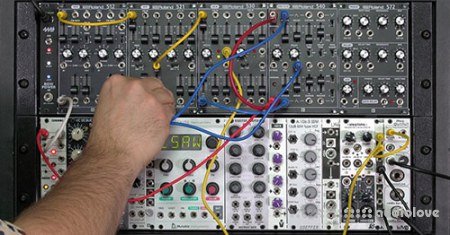Lynda Learning Modular Synthesis: Eurorack Expansion [TUTORiAL]

P2P | 04 July 2017 | 3.47 GB
You have a small core modular or semi-modular synth, and you're wondering: What should I add next to grow the capabilities of my system? And how can I get the most out of what I buy? In this extensive course, synth designer Chris Meyer reveals the important utility or "glue" modules you need to expand a core system such as a Moog Mother-32, and then explores a selection of the wide range of modules available in the Eurorack modular synthesizer format.
Each chapter on a module type—such as oscillators, filters, modulators, and more—starts with a general movie showing you what features to look for in a module and how to patch it into your system, and then dives into three contrasting, representative examples of modules available inside that category. Along the way, Chris reveals a wide variety of synthesis tricks and techniques for the performer or sound designer, with styles ranging from melodic to dance to noise/industrial.
This course has been designed as the logical follow-up to the original Learning Modular Synthesis or Learning Modular Synthesis: Moog Mother-32 courses, and should be helpful to a wide range of modular synthesists.
home page
Each chapter on a module type—such as oscillators, filters, modulators, and more—starts with a general movie showing you what features to look for in a module and how to patch it into your system, and then dives into three contrasting, representative examples of modules available inside that category. Along the way, Chris reveals a wide variety of synthesis tricks and techniques for the performer or sound designer, with styles ranging from melodic to dance to noise/industrial.
This course has been designed as the logical follow-up to the original Learning Modular Synthesis or Learning Modular Synthesis: Moog Mother-32 courses, and should be helpful to a wide range of modular synthesists.
Topics include:
- Shopping for modules more intelligently, with a better understanding of what features, options, and sound possibilities to look for
Interfacing your modular with the rest of your studio, including MIDI and sound connections - Reading waveform and spectrograph displays to better understand what each module is doing in your system, and how that translates to the sound that you hear
- Creating new timbres using and combining both East and West Coast techniques, employing creative waveform mixing, frequency and amplitude modulation, soft and hard sync, waveshaping, and more
- Managing audio levels to balance your desired amount of predictability and fidelity versus instability and distortion in a patch
- Taking advantage of additional MIDI and CV controls to more interactively perform your modular patch, including managing control voltage levels to dial in the desired result
home page
Only registered users can see Download Links. Please or login.


No comments yet